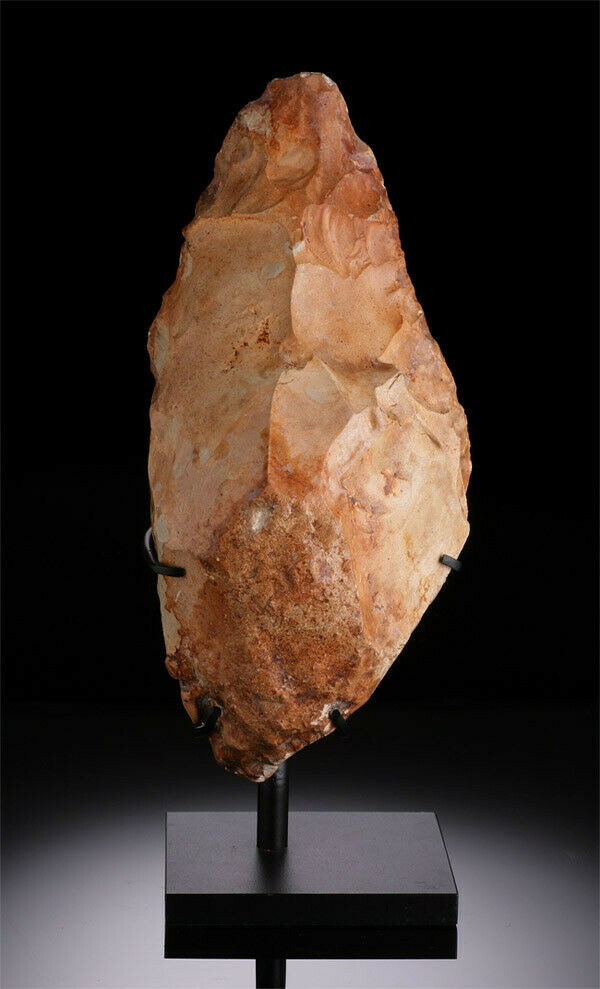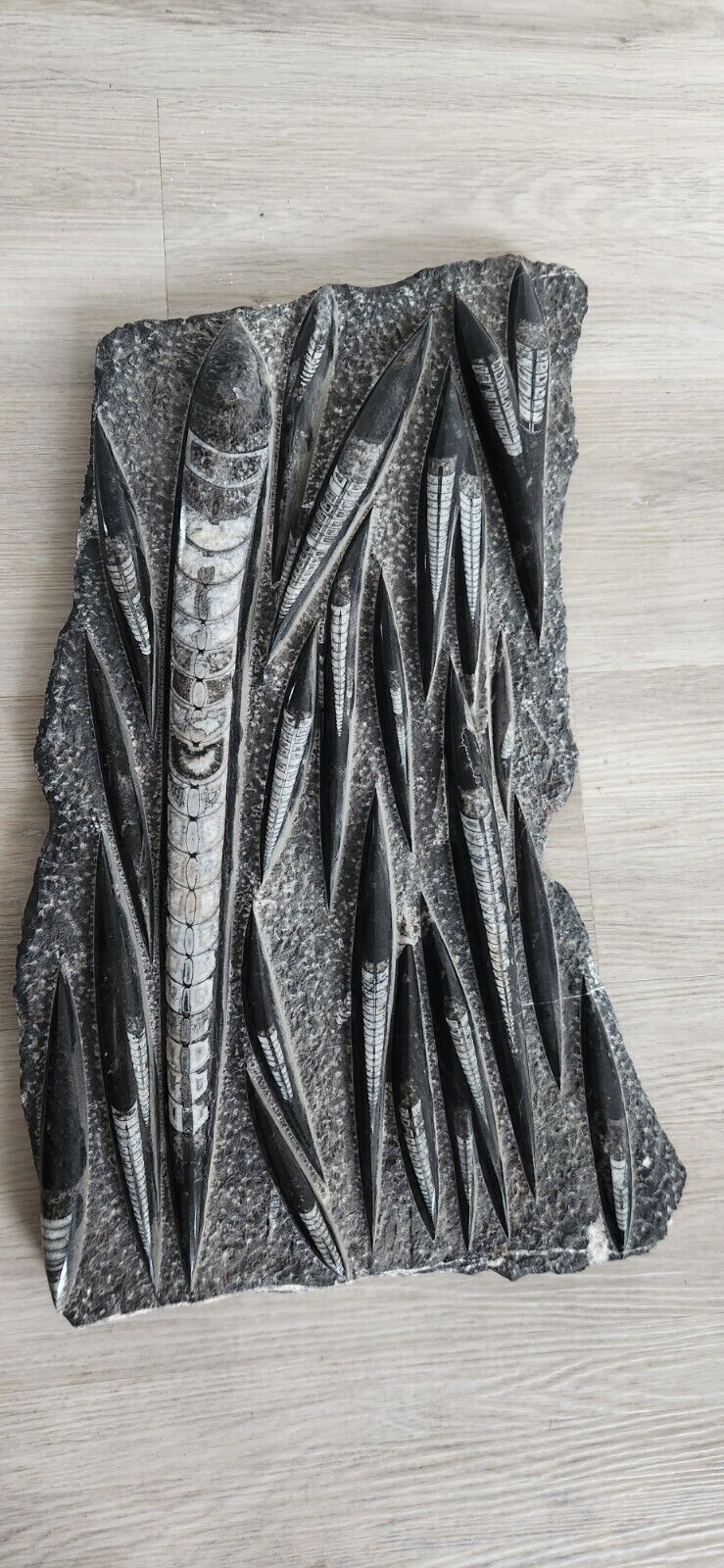-40%
Micoquian Hand-axe Italy..distinguished technologically by asymmetrical bifaces
$ 567.6
- Description
- Size Guide
Description
DimensionsHeight: 7 3/8 Inches; Width: 3 1/2 Inches; Depth: 2 1/4 Inches
Description
This hand-axe represents the Micoquian period, which is distinguished technologically by the appearance of distinctly asymmetrical bifaces. This well preserved specimen displays a clean point and edges. The color is comprised of warm intermixed rust tones. The tool fits naturally in ones hand, giving a nice feeling of how the original owner would have wielded it.
All of our Prehistoric Man tools are collected by the foremost expert in the field. We stand by the provenance of all our material and can provide a letter of authenticity upon request.
Measurements: Height in stand: ~ 7-7/8".
Actual tool: ~7-1/4" Tall x 3-1/2" Wide x 2-1/4" Thick
Location: Gargano, Italy
Time Period: Late Acheulean ~ 250,000-120,000 years old
More Information:
Paleolithic is simply defined as the Stone Age. In the Paleolithic era we see the earliest cultures that used stone tools. The Stone Age, as a larger category, is divided into three eras: the Paleolithic, the oldest Stone Age, the Mesolithic, or middle Stone Age, and the Neolithic, or new Stone Age. The Paleolithic is a time frame roughly known as the Ice Age, and it lasted until 10,000 BC, when glaciers began melting and humans developed new stone tools. The official beginning of the Paleolithic is roughly 2.6 million years ago.
The very first stone tools were not created by humans, but by our ancestors, and the story of the Paleolithic begins there.
Neanderthals (the th is pronounced as t) are our closest extinct human relatives that lived in Europe through Eurasia ~ 450,000 to 40,000 years ago. Actually, almost all modern humans (outside a small section of Africa) have ~ 2% of their genome related to Neanderthal.
The extinct Neanderthal had unique features, such as a large middle part of the face, angled cheek bones, and their noses were significantly larger than modern man's nose, for humidifying and warming cold, dry air. They were shorter, yet had much stockier bodies. That aided in their being able to more easily adapt to climatic changes. Neanderthals were intelligent, with brains as large (and in some cases larger) than modern man.
Neanderthal used a large suitable stone, called a core/nucleus, to shave off material for making tools and weapons. From that core/nucleus, they created stone tipped spears, hand axes, scrapers for leather, sewing needles and an array of other tools to help them survive.
Although, from dental records, the preferred diet of Neanderthal was plant based, as the climates changed, or they migrated away from warm climates, they inevitably looked for other food sources; so hunting for meat became more prevalent. Neanderthal also buried their dead, used shelters for habitats and were well versed in making fire.
At one point in time, as modern man was living in Northern Africa, it may very well have been that Neanderthal and Modern Man could have seen each other's camp fires across the Strait of Gibraltar. However, as neither were intelligent enough to sail the seas, the Neanderthal living in what is now Southern Spain may have been the last to encounter Modern Man, as the later migrated out of Africa. Amazingly, the amount of Neanderthal at any given time was remarkably small, with a peak population estimation of only 70,000 worldwide.
There are three main theories of Neanderthals extinction. 1) Modern man began occupying their habitats, pushing Neanderthal out into the elements. 2) Neanderthal may have literally been bred out of existence during interaction with modern man. 3) Volcanic and climatic conditions may have eliminated the small population of Neanderthal.











